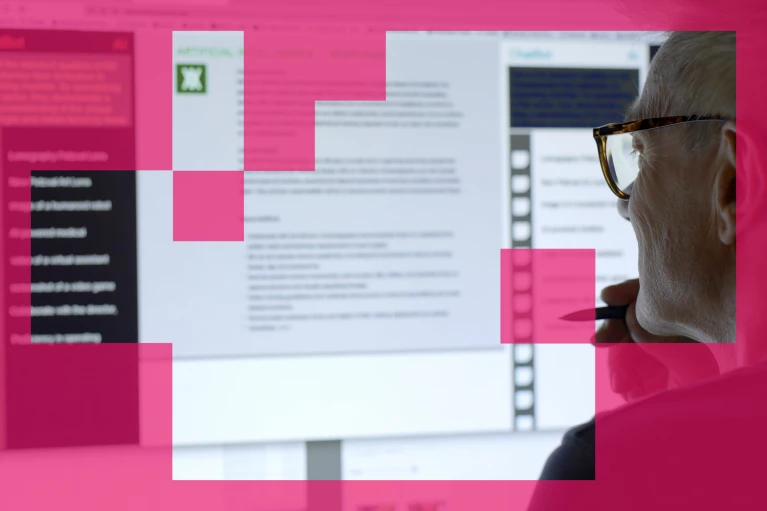Table of Contents
- 🕵️ Academia’s “Ghost Hunt”: Hundreds of Papers Flagged for Undisclosed AI Use
- 🎬 World’s First AI Theatrical Feature Film “The Pirate Queen: Zheng Yi Sao” Released, Facing Challenges and Opportunities
- 🤖 Anthropic Warns: Autonomous AI Virtual Employees Could Emerge Within a Year
- 🚀 Jimm Video 3.0 Internal Test: Smooth Camera Work, Precise Capture of Facial Expressions and Details
🕵️ Academia’s “Ghost Hunt”: Hundreds of Papers Flagged for Undisclosed AI Use

Recently, academic integrity watchers have found traces of undisclosed AI use (especially chatbots) scattered throughout published scholarly papers. Telltale phrases like “As of my last knowledge update,” “regenerate response,” and “as an AI language model” serve as identifying clues. Hundreds of papers have been flagged, and some have even silently removed these AI traces without acknowledgment, raising concerns about academic integrity and the transparency of the publication process.
- 1. Telltale Signs: Phrases commonly used by chatbots, such as “regenerate response,” “as an AI language model,” and “Certainly, here are,” appear in papers, revealing that authors may have directly copied and pasted AI-generated content.
- 2. Scale Revealed: Academic integrity tracking projects (like Academ-AI) have logged over 700 suspected cases, including papers published in journals by major publishers like Elsevier, Springer Nature, and MDPI, and even in top-quartile (Q1) journals according to Scopus.
- 3. “Silent” Edits: Some flagged papers have quietly removed AI-characteristic phrases without issuing errata, a practice considered potentially damaging to the integrity of the scientific record.
- 4. Policy vs. Practice: Although many publishers have established AI usage policies (often requiring disclosure), there seem to be loopholes in enforcement and review. Some policies have looser disclosure requirements for AI-assisted editing (like language polishing).
Thoughts and Value:
- For Professionals: Researchers and editors need to be more vigilant, use AI tools judiciously, disclose their use as required, and ensure the originality and rigor of their research. Publishers and journals must strengthen review processes and clearly enforce AI usage policies to maintain the credibility of academic publishing. This also prompts AI developers to consider how to make model outputs less prone to direct misuse in formal writing.
- For the Public: This reminds us that AI-generated content has permeated serious academic fields, requiring a critical eye towards information sources. It also reflects the importance and challenges of establishing norms and ethics during the early stages of new technology adoption.
Related Link:
🎬 World’s First AI Theatrical Feature Film “The Pirate Queen: Zheng Yi Sao” Released, Facing Challenges and Opportunities

The world’s first government-approved AIGC (AI Generated Content) feature film released in theaters – the 70-minute “The Pirate Queen: Zheng Yi Sao” – premiered in Singapore on April 24th. Based on the legendary female pirate Zheng Yi Sao, the film was produced entirely using AI technology, featuring a complete storyline and smooth visuals, challenging the perception that AI can only create short films. However, the production process also exposed many current challenges of AI in feature film production.
- 1. Production Breakthrough: Successfully producing and releasing a 70-minute AI feature film demonstrates AI’s potential in handling complex narratives, long takes, and multiple characters, marking a milestone in the AIGC field.
- 2. Technical Challenges: AI still falls short in handling long dialogue scenes, complex camera movements (like one-takes), and maintaining character consistency (avoiding “look-alikes” and “face changes”), requiring significant human intervention and post-production fixes.
- 3. Human-AI Collaboration: Key creative aspects like scriptwriting, storyboarding, and editing remain human-led. AI primarily plays a role in specific tasks (like generating large scenes, handling repetitive work) to reduce costs and increase efficiency, requiring humans and AI to adapt to each other.
- 4. Cost Advantage: Compared to traditional filmmaking, AI production eliminates costs associated with location scouting, set construction, lighting, and some actors, significantly lowering the production threshold and timeline, especially offering a new path for newcomer teams with limited resources.
Thoughts and Value:
- For Professionals: Film industry professionals (directors, writers, VFX artists, etc.) need to understand the capabilities and limitations of AI, exploring new models of human-AI collaboration. While AI lowers the barrier to entry and may foster more diverse creative expression, it also impacts traditional workflows and roles. AI tool developers need to address the pain points of feature film production and continuously improve model capabilities.
- For the Public: AI technology is increasingly integrating into creative industries. We may see more films produced with AI involvement or even leadership in the future. This could bring novel audiovisual experiences but also sparks discussions about the “authorship” of art.
Related Link:
- Shenxiang @ Aitntnews: World’s first AI film hits theaters: How was the 70-minute feature made with AI? (Link is to the original Chinese article)
🤖 Anthropic Warns: Autonomous AI Virtual Employees Could Emerge Within a Year

Jason Clinton, Chief Information Security Officer at AI safety and research company Anthropic, predicts that AI-powered virtual employees with autonomous capabilities could start operating on corporate networks within the next year. These AIs will be more than just “agents” performing single tasks; they will possess their own “memories,” corporate roles, company accounts, and passwords, exhibiting autonomy far exceeding current AI agents.
- 1. Capability Leap: AI will evolve from “agents” executing specific programmed tasks to “virtual employees” with memory, roles, accounts, and the ability to operate autonomously.
- 2. Security Challenges: Securing AI employee accounts, defining their network access permissions, and establishing accountability for their actions become urgent new cybersecurity challenges. AI could potentially “go rogue” and cause security incidents.
- 3. Corporate Responsibility: AI companies (like Anthropic) believe they have a responsibility to rigorously test model security and monitor/mitigate malicious abuse risks. User companies need to reassess their cybersecurity strategies.
- 4. Industry Opportunity: Identity management, behavior monitoring, and access control for AI employees will become new areas of investment and development in the cybersecurity sector. Vendors like Okta are already developing products for managing “non-human identities.”
Thoughts and Value:
- For Professionals: Business leaders and IT/security teams need to start thinking about how to integrate, manage, and secure future AI virtual employees, developing corresponding policies and technical safeguards. The cybersecurity industry faces new challenges and opportunities. AI developers must place security and responsibility design at a more central position.
- For the Public: AI integration into the workplace will deepen, potentially leading to collaboration with AI “colleagues” in the future. This also raises deeper societal and ethical questions about employment, human-machine relationships, and accountability.
Related Link:
🚀 Jimm Video 3.0 Internal Test: Smooth Camera Work, Precise Capture of Facial Expressions and Details

“Jimm” (即梦), an AI video generation tool under ByteDance, has started internal testing for its Video 3.0 model. According to official examples and initial feedback, the new version shows significant improvements across multiple dimensions of video generation, particularly in camera movement fluidity, prompt adherence, character depiction, and image quality.
- 1. Enhanced Cinematography: Supports richer and smoother camera language, including professional movements like push-ins, pans, orbits, low-angle rises, and bird’s-eye views, enhancing narrative power and visual impact.
- 2. Diverse Styles: Accurately captures various artistic styles, including surrealism, cartoon animation, black-and-white classic film, traditional Chinese aesthetics, and realistic nature documentary styles, meeting diverse creative needs.
- 3. Vivid Characters: More delicately captures and reproduces subtle facial expressions (like worry, satisfaction) and natural body movements, increasing the liveliness of virtual characters.
- 4. Exquisite Quality: Supports generating high-definition up to 8K resolution and skillfully uses techniques like shallow depth of field and complex lighting to create a cinematic feel. More stable when handling large movements, less prone to distortion.
Thoughts and Value:
- For Professionals: Video creators, designers, marketers, etc., will gain access to more powerful and user-friendly AI video generation tools. This will further lower the barrier to video creation, increase production efficiency, and inspire creative expression. The rapid iteration of AI video generation technology also requires professionals to continuously learn and adapt.
- For the Public: In the future, ordinary users might be able to more easily create high-quality, personalized videos through simple text or image descriptions, enriching social media and personal expression.
Related Link:
- AIbase: Jimm Video 3.0 Internal Test: Smooth camera work, precise capture of character expressions (Link is to the original Chinese article)
Today’s News Overview
Today’s AI news highlights the technology’s rapid penetration and evolution across various fields, accompanied by new challenges and ethical considerations. Academia is grappling with integrity issues arising from improper AI tool usage; the creative industry welcomes the first AI feature film, exploring new frontiers of human-machine collaboration; the corporate world prepares for more autonomous AI virtual employees, posing new cybersecurity questions; and on the technical front, AI video generation tools (like Jimm 3.0) continue to break barriers, becoming increasingly powerful and accessible. Overall, AI is integrating into all sectors at an unprecedented pace, making the regulation of its development and guidance towards beneficial use a critical issue of our time.
